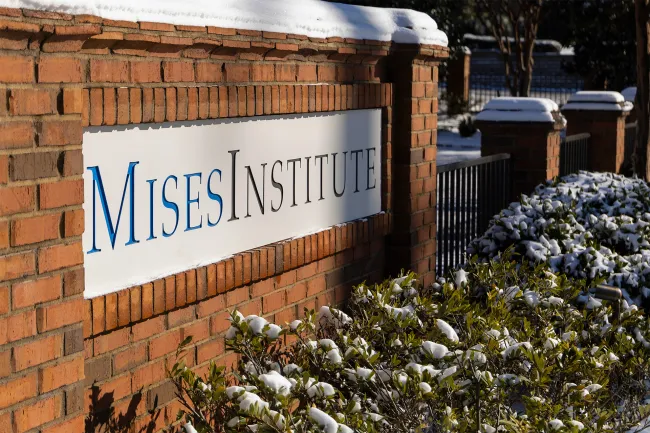Murray Rothbard Understood the Importance of Self-Ownership
In Aristotle’s well-known Ethics, he poses an age-old question: Can reasoning guide action, and should it direct our way of living? Unfortunately, this question loses its relevancy when put in the context of coercive governments, not unlike our own twenty-first-century American government which is hypervigilant and ever present in many aspects of our lives, including our education. What autonomy are people left with for the formation of reasoning when their beliefs and actions have already been decided for them through indoctrination and regulation?
A Day in the Life of a “Foreign Adversary Controlled” Application
Speaker Mike Johnson Continues the GOP’s War against Freedom
Thomas Woods has reminded us more than once that “no matter who you vote for, you get John McCain.” It’s not strictly and always true, of course, but the evidence is clear that it’s often true. The latest example is the GOP’s speaker of the House Mike Johnson (R-Louisiana) who has turned out more or less exactly like us skeptics have predicted. Johnson is a friend to the war party, a do-nothing on issues important to the rank and file (like immigration), and a true enemy of the people on issues like warrantless spying.
Is Anyone Smart Enough to use Inflation & the Public Debt to Manage the Economy?
Last week I posted something on how business confidence affects capital investment. Many factors may affect business confidence. The psychological mindset of business owners might change on its own. Public policies may affect business confidence too.
Iran’s Attack on Israel Provides an Opportunity to De-escalate
Over the weekend, the Iranian military launched hundreds of drones and missiles toward Israel. Israeli, American, and Jordanian air defenses reportedly intercepted and shot down almost everything Iran fired. One child from a Bedouin village in southern Israel was hurt by shrapnel falling from an intercepted missile, and an Israeli air base in the Negev Desert—also in southern Israel—sustained some structural damage.
Can John C. Calhoun Save America?
In an essay entitled “A Strategy for the Right” the late economic and libertarian scholar, Professor Murray N. Rothbard, called John C. Calhoun’s Disquisition on Government “one of them most brilliant essays on political philosophy ever written.” Published in 1850, the year of his death, Calhoun’s Disquisition warned – and explained – how the American political system could evolve into tyranny, and how to stop that from happening.
100-Percent Reserves banking in Argentina and the Real Bills Doctrine
My latest contribution to the debate on Milei´si banking reform and the 100% reserve ratio has received a response in form of a video by Juan Ramón Rallo who defends a fractional reserve banking system based on real bills.
Frédéric Bastiat Was a Radical Opponent of War and Militarism
Frédéric Bastiat is well known for his radical free-market positions as expressed in his still-famous book The Law and in insightful essays such as “That Which Is Seen and That Which Is Not Seen.” Joseph Schumpeter called Bastiat “the most brilliant economic journalist who ever lived.”
